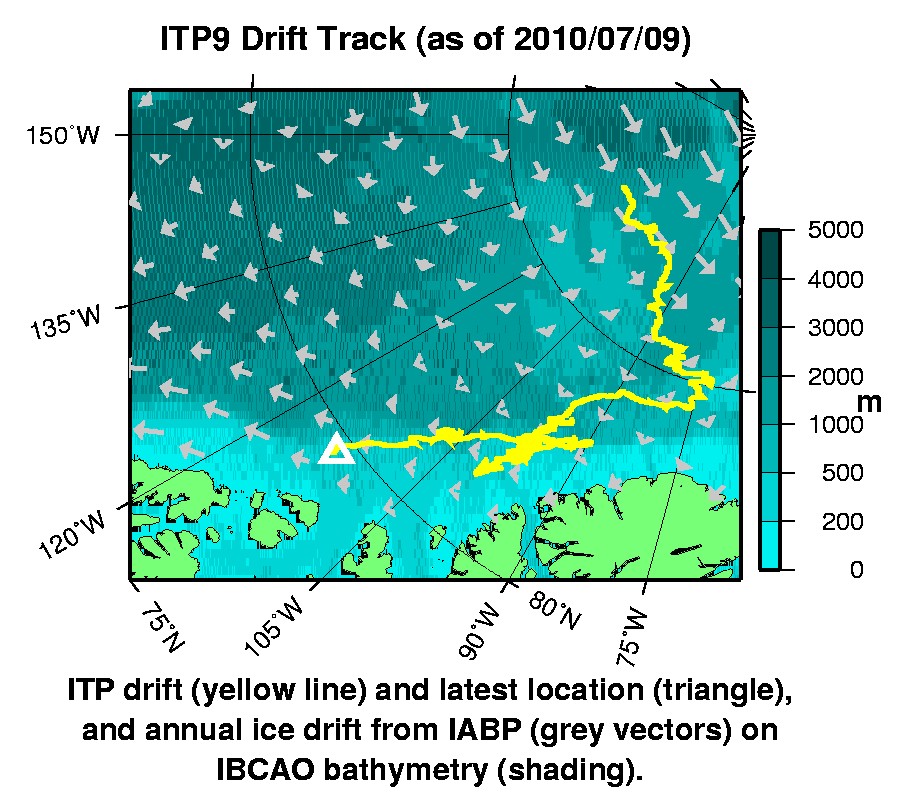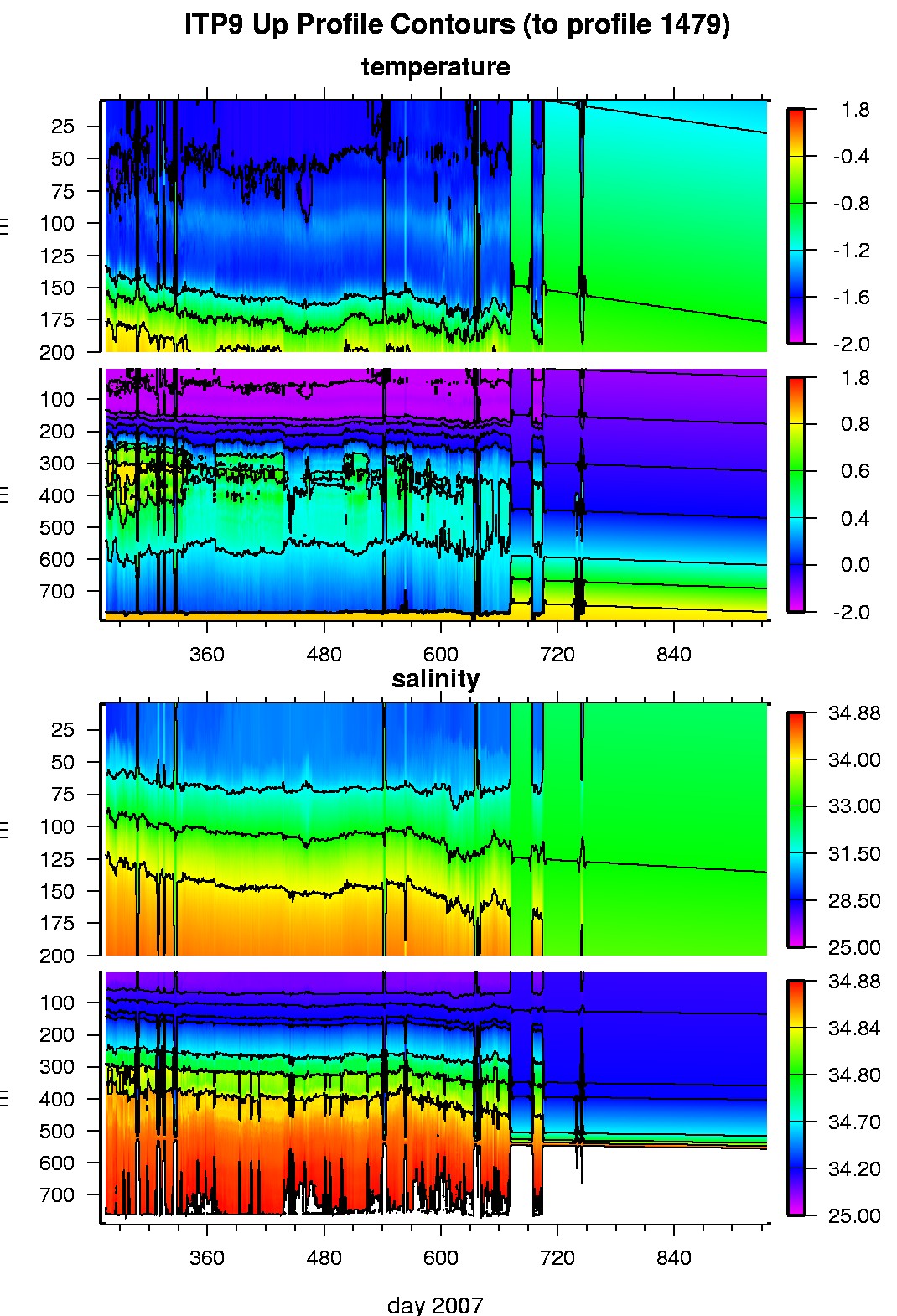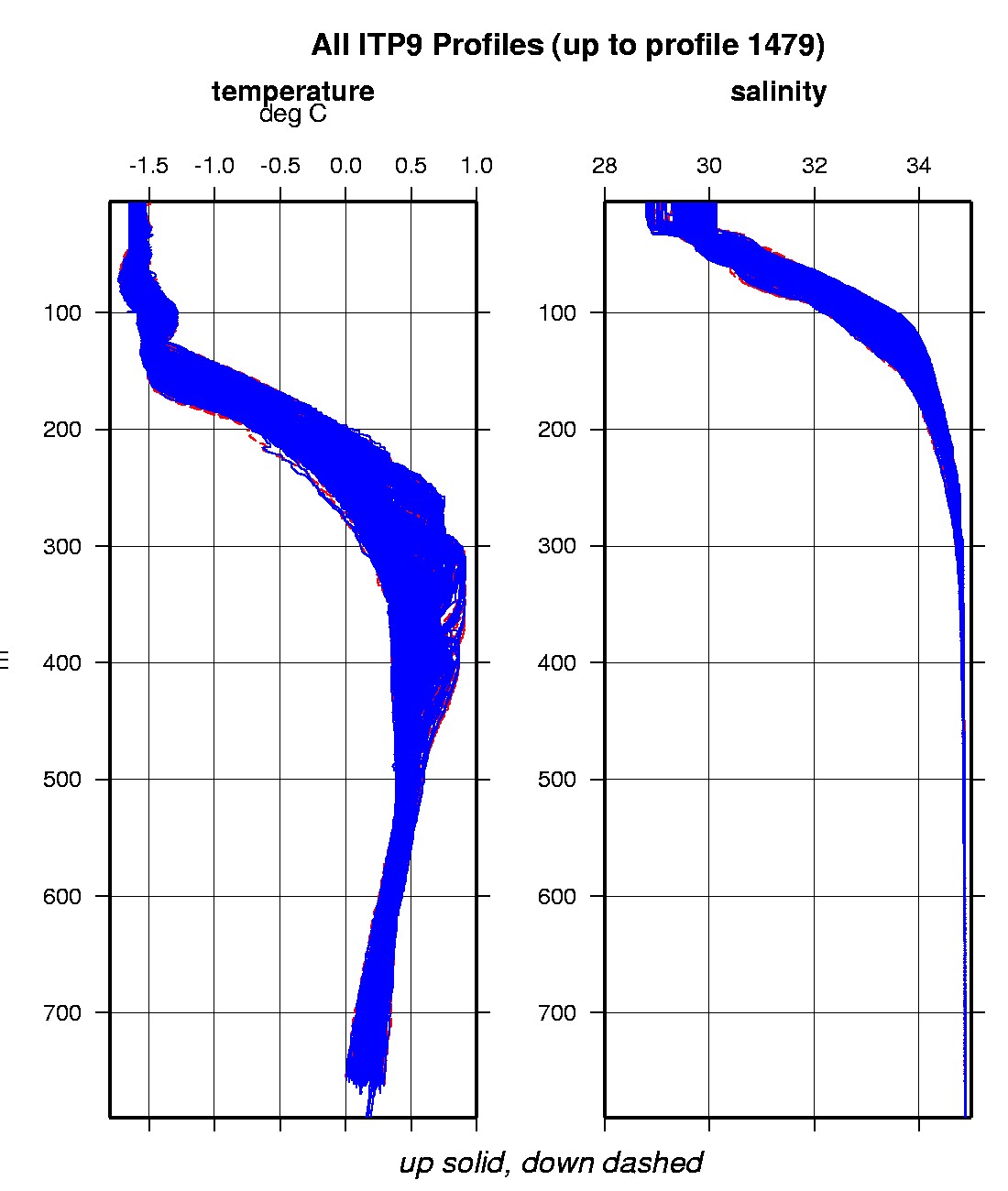ITP 9 Data Description
In the surface package, the GPS receiver was powered every hour to obtain locations, and buoy temperature and battery voltage status were recorded. After 4 months (and 274 profiles) of reliable operation and data telemetry, the instrument stopped phoning in. Unexpectedly, 13 months later, the surface package resumed calling in and transferred all of the data acquired by the profiler (nearly 900 more profiles) and surface unit during the gap. This occurred concurrent with a large initial battery voltage drop, and coincident with off shelf drift of the ITP package and the profiler bottoming out at the end of the mooring wire. GPS locations were acquired throughout the period without the phone, so it seems unlikely that the surface buoy was covered in, or pushed beneath the ice.
Last contact with the profiler occurred while the system again drifted over the shallow continental shelf in July 2009. The surface buoy continued to transmit location data for another year.
The plots to the right are of the final, calibrated, edited data (as opposed to the raw data presented on the active instrument pages).
See the Data Products tab to the left for descriptions of the three levels (I, II, III) of data processing and to access all data.
ITP 9 data can also be found at the links below:
Level II hourly buoy location data in ASCII format: itp9rawlocs.dat
Level III 1-Hz processed profile data in MATLAB format: itp9cormat.tar.Z and itp9cormat.zip
Level III 1-db bin-averaged processed profile data in MATLAB format: itp9final.mat
Level III 1-db bin-averaged processed profile data in ASCII format: itp9final.tar.Z and itp9final.zip


